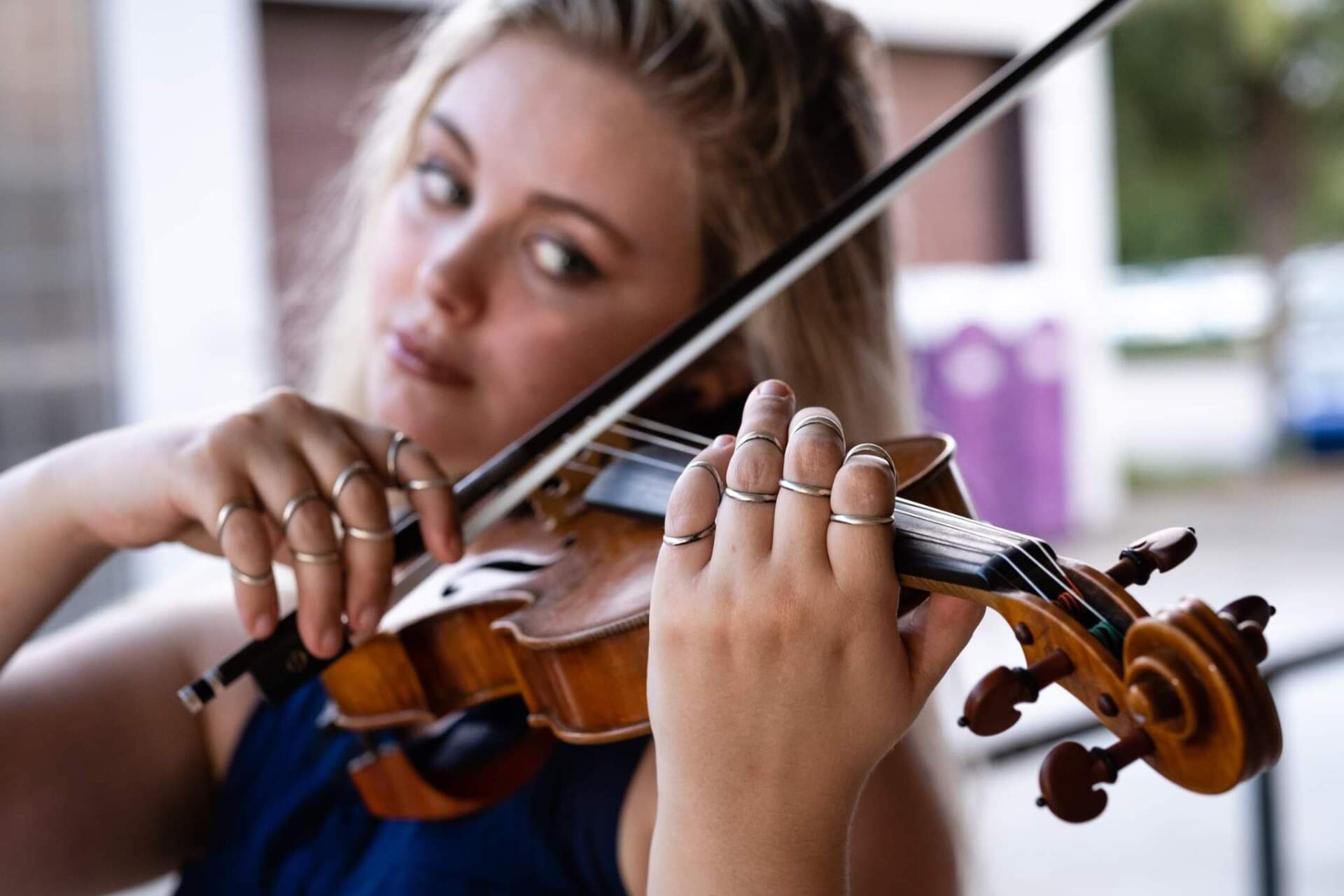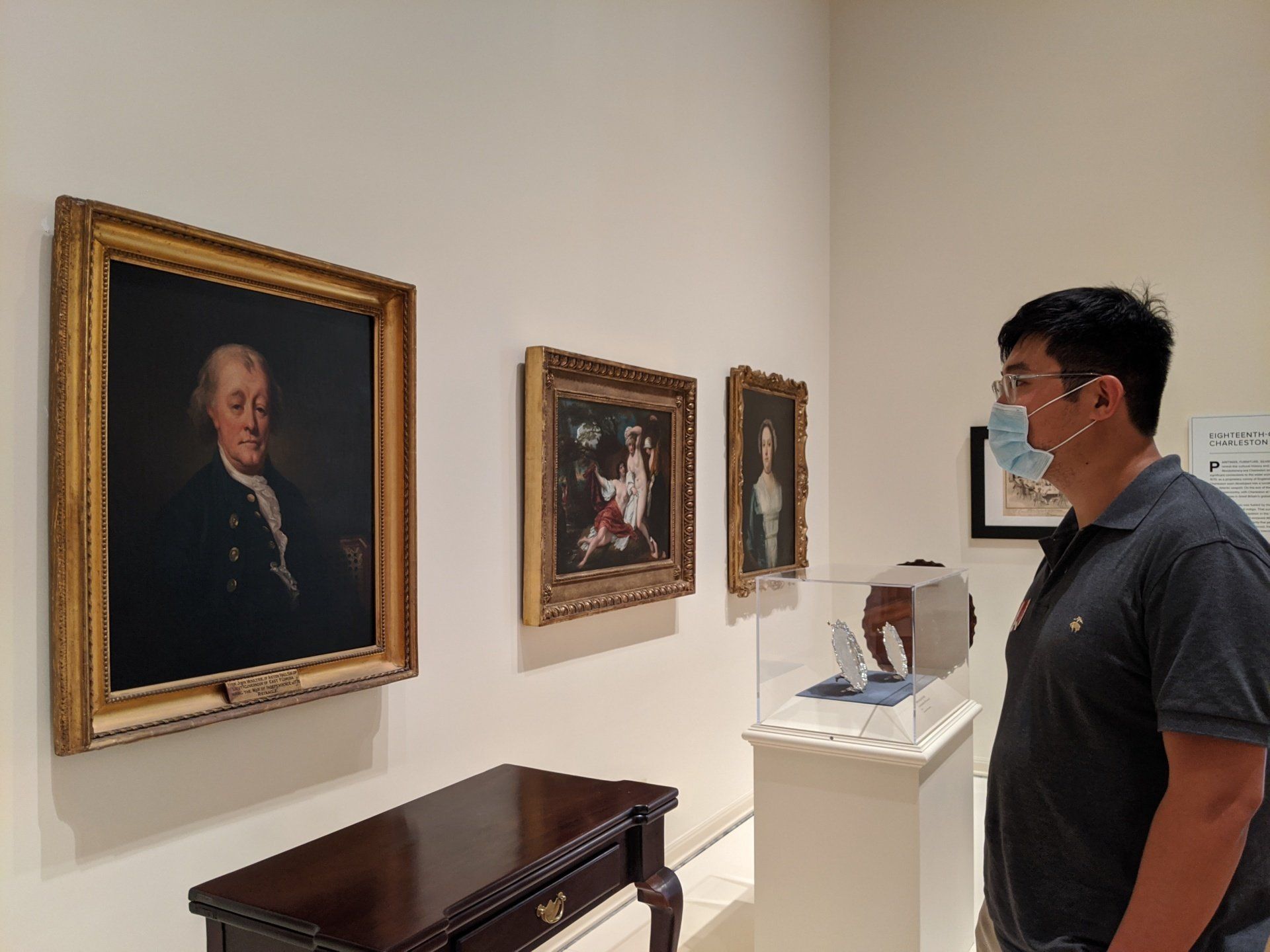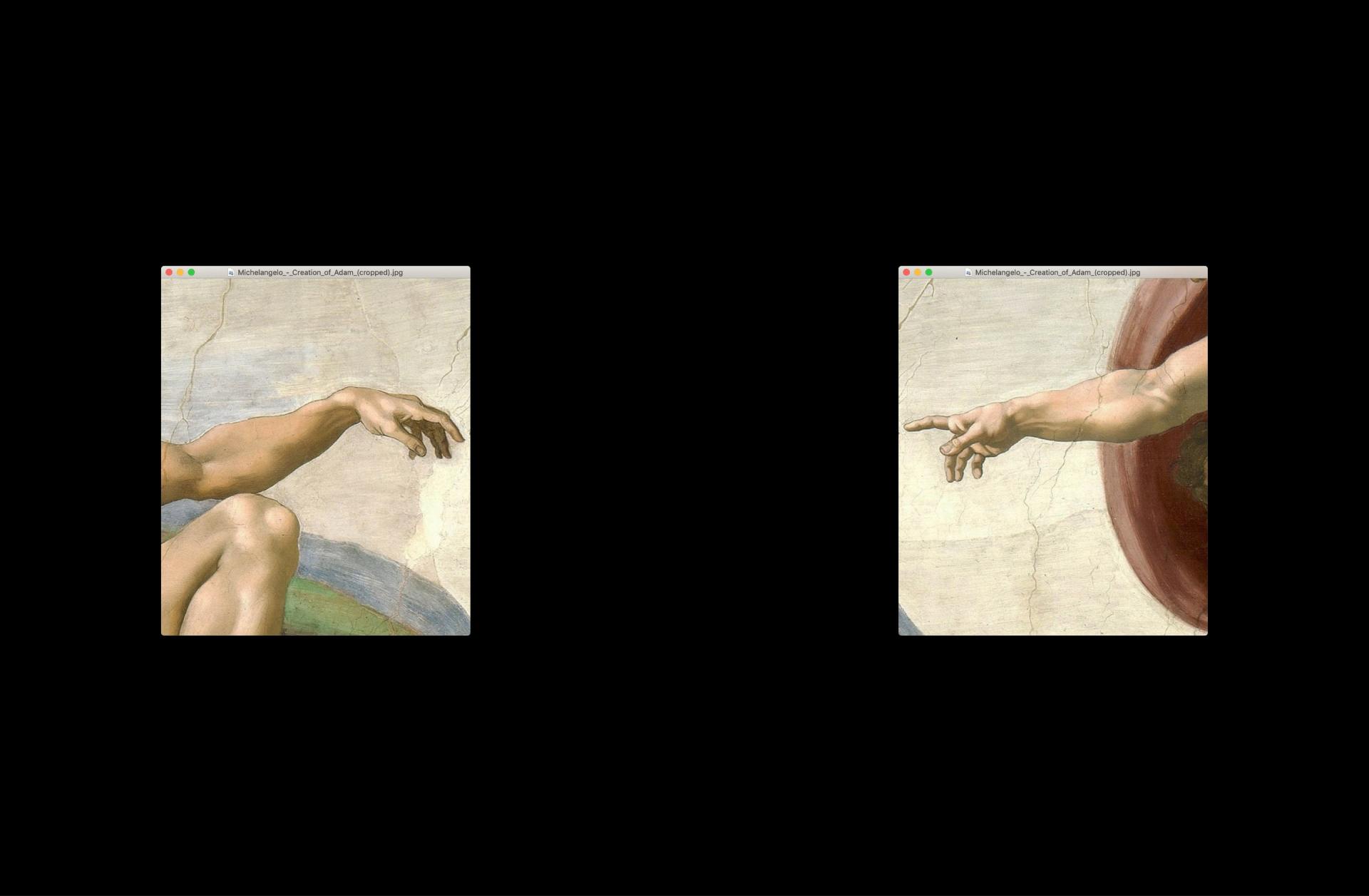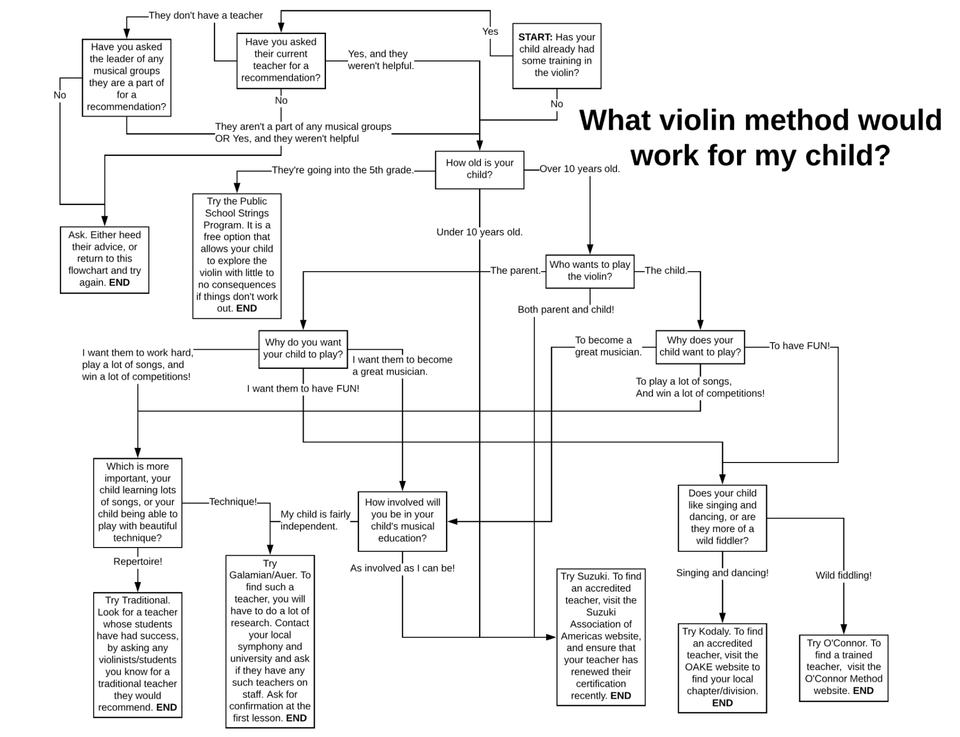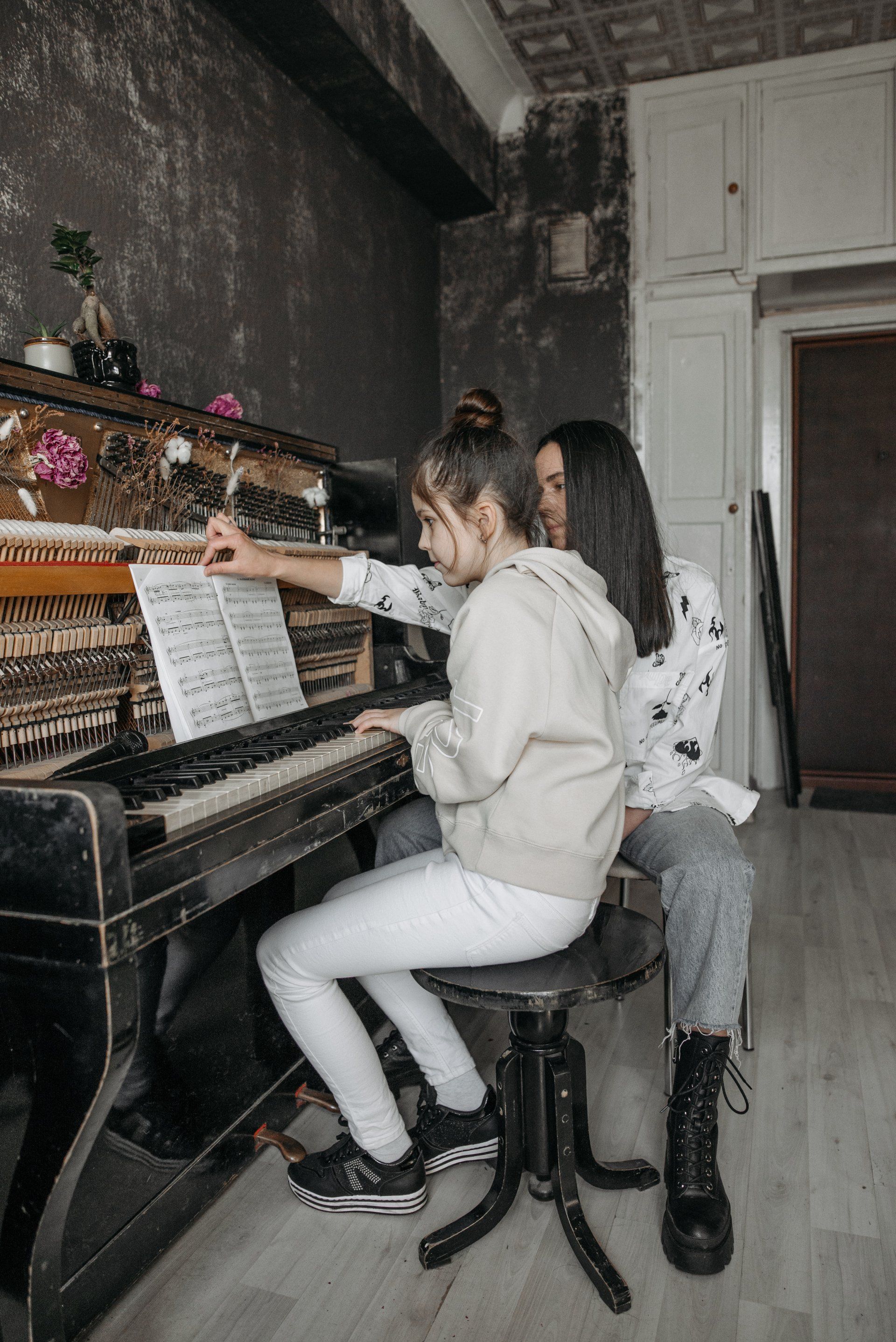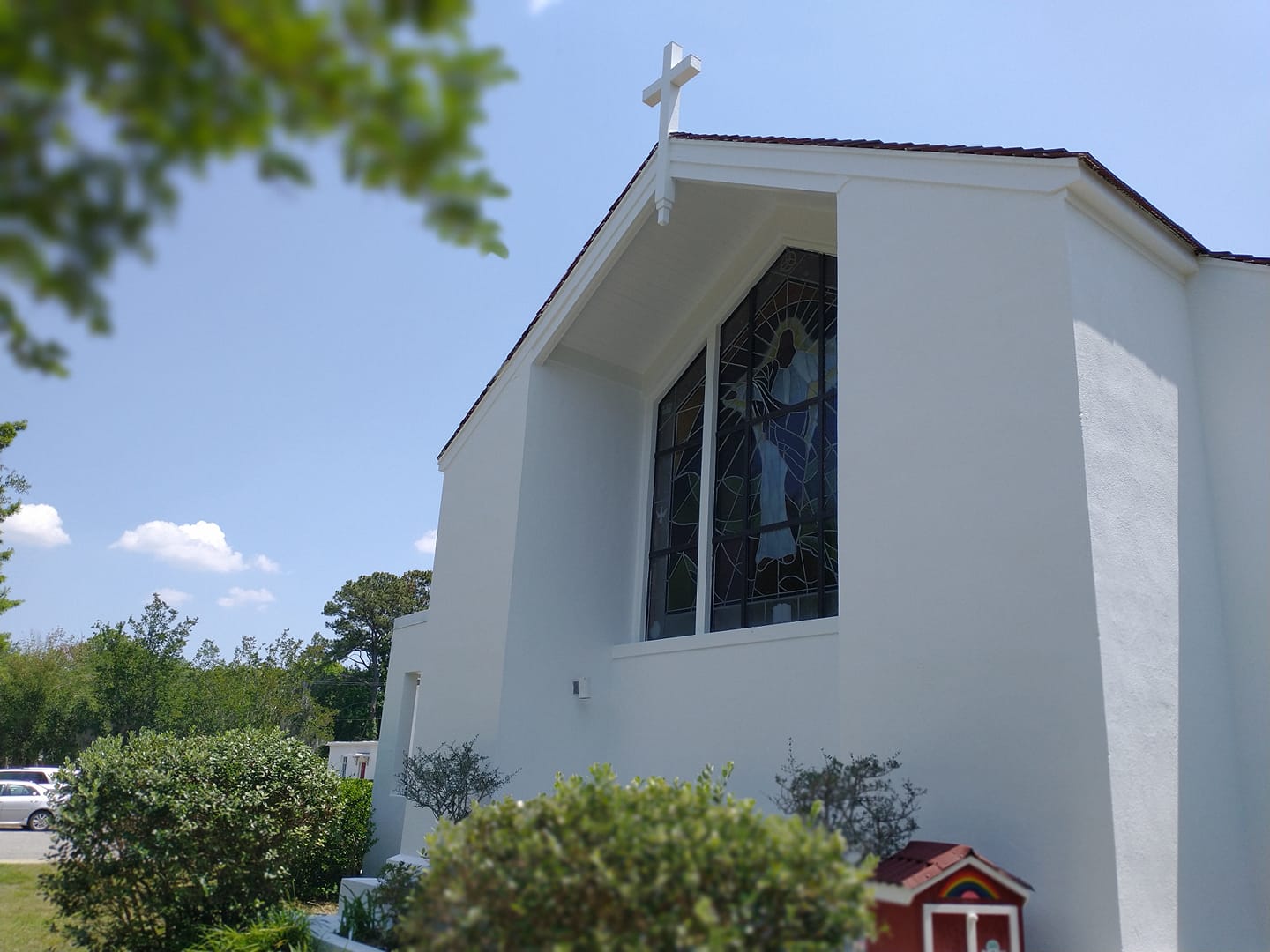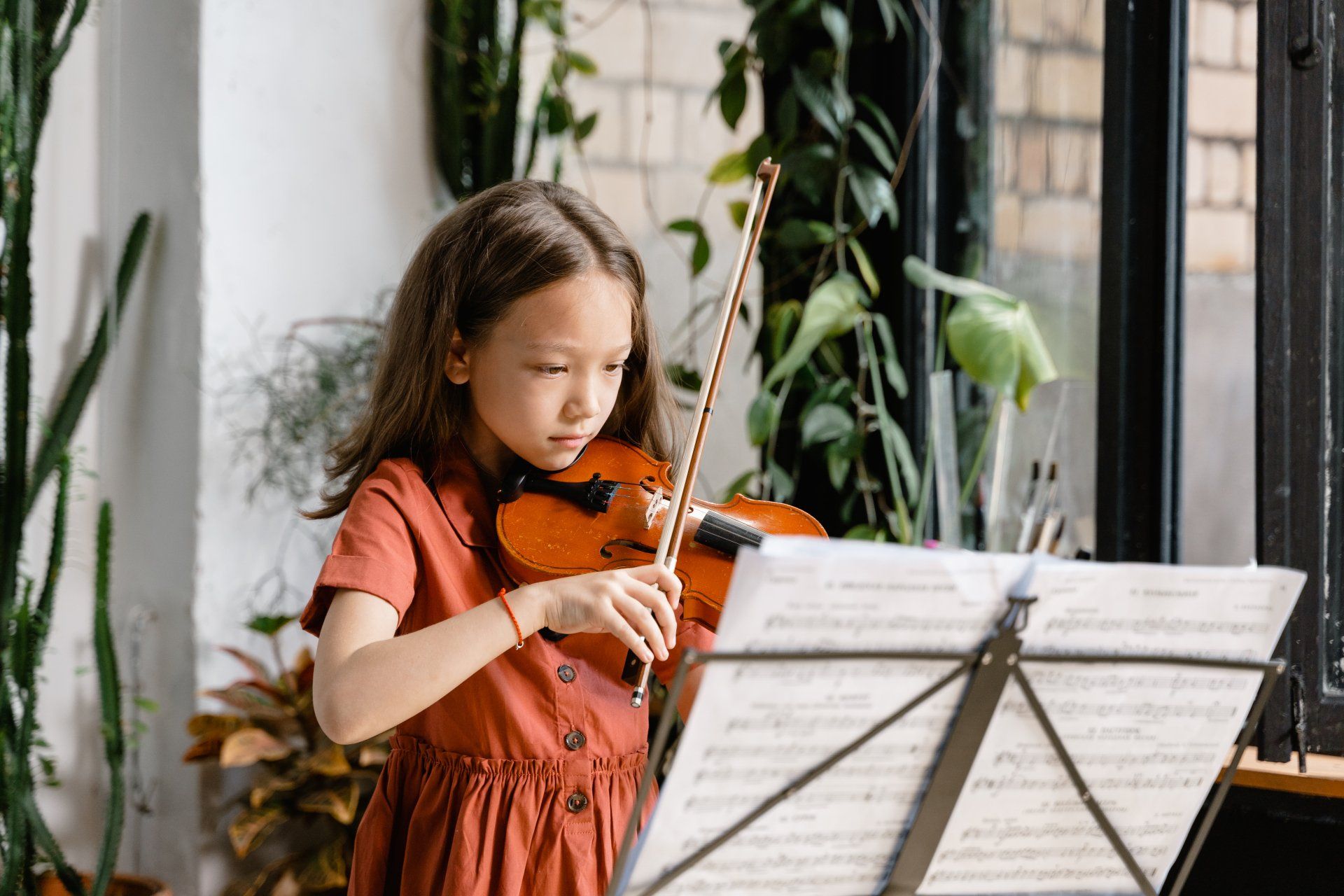How to choose a violin teacher
Looking to start the violin? Need a new teacher after years with another? Here's a guide to help you out.
For whatever reason, you are looking for a new violin teacher for your child. This is going to be an exciting but infuriating process- on one hand, seeing all of the options out there is awesome, but it can also be overwhelming, and frustrating, when you don't know exactly what you're looking for. Whether you're completely new to the instrument, or you've spent years studying with someone you don't feel is helping you achieve as much as you could anymore, please consider these points before going to study with a new teacher.
First, a note to those of you looking for a new teacher because you are dissatisfied with your old teacher: Talk to your current teacher first.
Tell them what is wrong, and that you feel as though you need a new teacher, and explain why. Your teacher wants whatever is in your best interest. They will either work with you to get past these difficulties, or they will agree, and help you in the search to find a new teacher. Really, your current teacher is the absolute best resource there is when it comes to finding a new teacher.
The Student
Now, let's consider the most important factor- your child.
- How old are they? If your child is about to go into the fifth grade, they may be eligible to start playing in the strings program at their school. If they are older, then they will need a private teacher to catch up to their peers. If your child is very young, then they need a teacher who is not only experienced with young children, but who teaches a method geared towards kids their age. As children grow older, the pool of viable teachers opens up- but at the same time, the child's preferences narrow down the field. It will take meeting (and vetting) the teachers you decide to try out to really determine their chemistry with your child- and remember, this is very, very important. Your child cannot learn very well if they don't like their teacher, but they will thrive under the tutelage of someone they love.
- If they're not new, how long have they played, and with who? As mentioned above, if your child has already played the violin for any amount of time, ask their current teacher for recommendations for new teachers.
- Do any of their friends play? If your child has friends who play the violin, ask their parents who their teachers are, and what they think of them. Ask if you and your child can observe a lesson one day.
- Are they a member of any orchestras, or other groups of musicians? If your child plays in any chamber groups, ask the organizers of said groups (conductors, coaches, etc) if they have any recommendations, or if they themselves teach.
- What sort of teachers does your kid like, at school, and what sort of teachers do they hate? Talk to your child about their academic teachers, to gauge how your child likes to learn.
- What's their attitude towards the instrument? Are they the one who requested to learn the instrument? If so, why? What are their goals? Make sure that their goals align with their teacher's, to ensure your child's success and satisfaction. Or, are you the one spearheading this ambition? If so, you might want to consider looking at a method that puts a heavier responsibility on the parent.
The Parent
We also have to consider the second most important factor- you. That's right- you are more vital to this than you might have thought. There are three items to consider, concerning you: How much time, how much effort, and how much money you are able to put into your child's musical education.
- Concerning time:
- How is your child going to go to lessons? Will you just drop them off, and pick them up afterwards, or are you going to go in and take notes, maybe recording each lesson for later review? And what about other obligations- do you want to take the time to drive them to and from rehearsals, competitions, and auditions, or would you rather they find transportation through their studio?
- What about practice at home? Is your child going to practice by themselves, or are you going to observe them, to help keep them on track, or actively participate to guide them as best you can?
- In other words, how much time are you able to dedicate? Are you able to spend as much time as necessary, or are you only able to do as much as is required? Be realistic, not idealistic: No one will judge you for not being the 'perfect' musical parent- remember, Mozart often hated his dad!
- Concerning effort:
- Do you have the energy after a long day of work to help your child practice?
- How far are you willing to drive to take your child to lessons, or are you looking for a teacher that can come to your house?
- Are you looking forward to actively participating in lessons to help your child learn faster, or do you want them to figure it out by themselves, building a sense of independence?
- In other words, what is your ideal involvement in their musical education- do you want to really delve into it, or do you want your child to be the driving force? Both are acceptable, it's just a question of the balance you want to find.
- Concerning money:
- Up front- How much can you go ahead and pay today, to start your child's musical education? If you end up buying an instrument, this is an important question to consider. If you plan to rent, it's only slightly less important, as you might also need to purchase music, a stand, and other such supplies that will be a one time purchase.
- Monthly- How much can you pay per month for your child's musical education? This is where you need to consider how much you're willing to spend on lessons (which generally range from $80-$600/month), and how much you're willing to spend on violin rentals, if you plan to rent (which can be anywhere from $20-$100/month, depending on your region). This will be a continual investment, that will go up in time, both with the cost of living, and with the advancement of your child's progress.
- Occasional expenses- How much are you willing to spend on opportunities that come up randomly? If your child is invited to attend a summer camp, or a prestigious musical institute, how much are you willing to pay? If your child auditions for a competition, how much can you afford in entrance fees? And what about transportation, to conventions and the like? And what if your child wants to attend a concert? These will be expenses that come up from time to time, and it's up to you to decide how you want to address them.
The Method
There are many different methods of violin study out there, and each method is tailored to suit a specific kind of child and parent. Consider your answers to the questions above, and consider how well you might fit each of these methods:
- Suzuki
- Pros
- The method was created by Shinichi Suzuki, a lovely little old Japanese man who studied violin in Germany, and has seen great success through the years.
- Suzuki allows children to start very young, as soon as they are potty trained, with no upper age limits for beginning.
- There is a worldwide network of Suzuki teachers, camps, and other organizations, both for scholastic advancement, and for your child to form friendships.
- Suzuki gives the child essential standard classical repertoire, giving them a concrete foundation starting with "Twinkle, Twinkle, Little Star", and ending with a Mozart Concerto.
- Your child learns at their own rate, developing their technique individually, rather than just learning a lot of songs. Each piece in the Suzuki method introduces one new aspect of technique, reinforcing these techniques through games and exercises in group classes.
- Your child will learn to read music naturally, rather than spending time studying that, by just listening and learning the mechanics of music first (and also learning to play by ear)- what Suzuki calls the 'Mother Tongue Method'.
- The Suzuki Triangle- as the parent, you are actively involved in all lessons, and you get to practice with your child every day, forming an awesome parent-child bond; the parent, teacher, and child all put in their best efforts to ensure the success of the child.
- Improvisation and composition are discussed to prepare for the cadenza in Mozart's concerto.
- Your child immediately gains a group of friends through group lessons, and summer camps.
- The main tenet of the Suzuki method is that "Every Child Can"- no matter who or what your child is, they can play the violin, and find joy through music.
- Cons
- There are a lot of misconceptions surrounding Suzuki, specifically stating that the method creates 'robotic' children who don't actually understand music; this is not the case, as individuality is encouraged, but it nevertheless is a widely believed falsehood, so your child may have prejudices against them by non-Suzuki peers.
- Suzuki teachers focus on technique more than repertoire, which means that your child might not 'move as fast' or learn as many songs as non-Suzuki peers, despite having the same technical skills.
- Your child will not learn to read music at the same time as their non-Suzuki peers, so in the beginning, their sight reading skills will not be up to the standard.
- Extra repertoire outside of the method is encouraged by the Suzuki method, but is usually only available through outside resources, such as chamber groups, orchestras, and individual studies.
- The parent must spend a lot of time and effort working with the child, actively participating in every single lesson, and guiding their child's practice at home every single day. Your input and participation is required- there is no negotiation on this front. It's rewarding to develop that bond with your child, but it is a lot of work.
- How do I find a Suzuki teacher? Visit https://suzukiassociation.org/find-a-suzuki-teacher/ , the official website for the Suzuki teachers in America, to find an accredited institution in your area. Do not Google "Suzuki teacher"- a fair number of people claim to be Suzuki teachers, when they just use the music- the music is inconsequential, it is HOW the teacher teaches that matters: actual Suzuki teachers go through training in order to receive an official certification, and they must renew it annually. Always ask any potential candidates when they last went to renew their training, and where.
- Kodaly
- Pros
- The method was developed by Zoltan Kodaly, a well respected Hungarian violinist and composer, with a doctorate in music.
- The sequence of skills introduced is built on the psychological and physical capabilities of a child based on their age and individual circumstances.
- Singing is used to introduce many musical concepts, which is easy for kids who are already vocal.
- Notation and reading music is not introduced until after a concept is fully realized by the child.
- To learn rhythms, children get to dance, and run, and march, etc- moving around to physically feel the rhythms, often while singing.
- The repertoire introduced contains some standard repertoire necessary for any classical musician.
- Students learn to play, but they also learn to compose, writing their own music, and understanding music theory.
- The method was developed by Zoltan Kodaly, a well respected Hungarian violinist and composer, with a doctorate in music.
- Cons
- Rhythms are assigned syllabic values, which can be difficult for a child to keep track of, versus other methods which introduce rhythms through words that match (Suzuki) or simply numbers and sounds (Traditional).
- Children who are shy, who do not want to sing with others, or who don't feel comfortable dancing around, will not be able to do the majority of the basic elements that require them to let go of these inhibitions.
- Kodaly uses movable-do solfege to teach pitch, which means that though the child will develop an excellent sense of relative pitch, they will not have a trained sense of absolute pitch, which is necessary in more advanced or more modern works.
- The parent takes on a passive role, so you would not be actively involved in your child's musical education, putting all of the work on your child; they would be entirely responsible for practicing.
- The method was not developed intentionally- Kodaly did not set out to develop a method of instruction, so it is not backed by research into what makes for a great musical education.
- The repertoire is heavily biased towards Hungarian folk music.
- Pros
- How do I find a Kodaly teacher? Visit https://www.oake.org/chapters-and-divisions/ , the official website for the Kodaly teachers in America, to find an accredited institution in your area.
- Galamian/Auer
- Pros
- The method of Ivan Galamian, a highly renowned teacher from Iran (known by some as the greatest teacher of all time), directly born from the teaching of Leopold Auer, a Hungarian teacher of great repute; it has produced some of the most well renowned performers and teachers of all time (for example, Jascha Heifetz and Dorothy DeLay).
- Galamian quite literally wrote the book on the principles of both playing and teaching the violin, a guide which is used by many teachers, regardless of their method.
- Every student is regarded as an individual, the technique shaped to fit their exact personality and needs.
- Technique is the major focus. Being able to play beautifully and precisely is the primary goal. Rather than just rushing to play through a lot of songs, your child is encouraged to double down and really make every piece as lovely as possible, to let their interpretation of the song shine.
- The method has many variations, as Galamian's proteges developed their own distinct styles. As it is such a variable method, with so many branches, Galamian method teachers have a wealth of inspiration to draw from in their studies.
- As technique is a major focus, the method highly emphasizes etudes, meaning that your child will use the same materials for a long time, so it's very easy to get your money's worth out of your music. Additionally, this focus develops in a young musician a great understanding of the importance of hard work.
- Cons
- Galamian teachers can be very intense, and expect a lot of their students. Your child has to practice efficiently and correctly- they cannot just rush through their studies, they have to be diligent. It can be frustrating, especially when focusing on the same technical studies for weeks on end. That hard work is very rewarding, but only if your child can power through it.
- The method requires a focus on technique, so the development of a robust repertoire takes a backseat. Yes, repertoire is important, but your child will not be able to move forward quickly without the foundation of solid technique. This can also get very frustrating, as your child may feel as if they are 'falling behind' where their peers are- even when technically, they are ahead.
- Etudes, scales, and arpeggios are emphasized heavily, so a significant portion of your child's practice should focus on playing things that are not 'fun'- it can be difficult to find joy in what amounts to a physical and mental workout!
- It can be difficult to find a verified Galamian teacher. One must do a lot more research than with other methods, as there is no database of Galamian style teachers.
- How do I find a Galamian teacher? Contact your local symphony/university, and ask if they have any Galamian trained pedagogues on staff. Then, ask for their history, and verify it as best you can, to ensure that they were indeed trained by Galamian, or secondarily by someone else who was trained by Galamian.
- 'Traditional' - French, Russian, German, Italian, etc.
- Pros
- There are a lot of teachers out there to choose from! Most teachers that do not teach one specific method can be called 'traditional'. There are a variety of methods within the broad classification of 'traditional', mainly stemming from different countries around the world, so you have plenty of options.
- Students are taught to read music from the very beginning, so they build that skill from the start.
- The main focus is on building a solid repertoire, so your child will have a robust sense of music that will only grow greater as they continue to play.
- The traditional method focuses on creating an awesome soloist, fostering a sense of independence, and confidence in their music.
- A lot of camps, institutes, etc. out there are designed with traditional students in mind, so your child will have lots of options for their summer studies.
- There are a lot of teachers out there to choose from! Most teachers that do not teach one specific method can be called 'traditional'. There are a variety of methods within the broad classification of 'traditional', mainly stemming from different countries around the world, so you have plenty of options.
- Cons
- It can be hard to gauge the effectiveness of a traditional teacher, so you must do a lot of research to find a good one, mainly through judging their students. Remember- a great musician is not necessarily a great teacher!
- As students start by learning to read music, they can have a hard time learning by ear, or even hearing music correctly, becoming far too reliant on the page- which can introduce a lot of difficulties when it comes time for them to play in chamber groups and orchestras, or to improvise or write their own music, such as for a cadenza.
- With a greater focus on repertoire than technique, it can be difficult to move forward through pieces, as the student will have to learn all new technique in a new piece while learning that new piece of music- which can be very, very frustrating. Every new piece can feel like a daunting undertaking, rather than merely something new, as your child will learn technique as they go, rather than establishing an understanding of such things before they show up in their songs.
- The traditional method encourages solo performance, but most violinists perform in chamber groups, and orchestras- which requires a very different attitude towards music. It can be confusing (and sometimes maddening) to spend all of your time studying to play solos, only to find yourself sitting at the back of a section full of 40 other people playing the exact same thing.
- It can be hard to gauge the effectiveness of a traditional teacher, so you must do a lot of research to find a good one, mainly through judging their students. Remember- a great musician is not necessarily a great teacher!
- How do I find a traditional teacher? Throw a rock and you'll hit one. Pretty much every teacher out there that doesn't advertise as part of a specific method can be classified as a 'traditional' teacher. You'll have to do a little research to find one that's specifically suited to your child's needs, and your goals!
- Pros
- Public School System
- Pros
- It's free!
- Your child will receive a grade for doing something fun! And if it doesn't work out, they won't be punished- they can just not sign up for the following year, and you didn't miss out on anything.
- Automatically, your child will have a group of friends in the other kids their age who decided (or whose parents decided) to go into the strings program. This group dynamic can really help develop a wonderful sense of teamwork, very early on- and at the very least, your child has some new friends!
- As it is just a class, a public strings program is very low pressure. Your child can decide at any time if they want to study more seriously, and seek out a private teacher.
- You as the parent are not required to do anything, except show up to their recitals and concerts at school, and applaud when they perform.
- It's free!
- Cons
- Your child has to start at the beginning of the program. If they are already too old, then this might not be an option. If they're too young, they will have to wait before they can join.
- Without private lessons, your child might struggle with a lot of technique that cannot easily be covered in a group setting. The lack of individual attention from a teacher can make it very difficult to advance.
- The student's advancement relies entirely on their efforts, both in school, and outside of school. If they do not want to practice at home, they will not advance. They must remember that practicing is just like other homework, in this instance- they have to do it at home, every day, even when they don't want to. It can be very easy for students to justify not practicing, as it is not as concrete as other homework.
- As you cannot observe their lessons and classes in school, it might be difficult for you to help your child practice. You will not be able to work with them as closely as you would with private lessons.
- Your child has to start at the beginning of the program. If they are already too old, then this might not be an option. If they're too young, they will have to wait before they can join.
- How do I find a public school strings program? You'll have to do a little research online to determine which schools in your district offer a strings program, and how it works. Contact your local school district for information.
- Pros
- O'Connor
- Pros
- The method was created by Mark O'Connor, who is a well known and admired fiddler from the USA, who was classically trained by conservatory graduate Stephane Grappelli.
- The method is very closely based on the Suzuki method of instruction, which has seen great success through the years*.
- The leading teacher of the method, Pamela Wiley, has 40 years of experience as a successful music instructor, albeit in the Suzuki method.
- The method focuses on fiddle music, which many see as particularly fun.
- All teachers in the method are trained by the creator of the method himself.
- Cons
- The method's creator, Mark O'Connor, has had some questionable circumstances surrounding his personal life.
- Additionally, O'Connor has taken many opportunities to publicly degrade and shame other methods of violin instruction, particularly the Suzuki method, by stating falsehoods and accusing these instructors of immoral behaviors.
- *O'Connor's method has yet to produce any successful students. This is partially attributed to the short time that it has existed.
- The majority of the method is comprised of songs written by O'Connor, of which he retains the rights. Therefore, your child will not have any real repertoire for future efforts on the violin, nor will they be able to perform the repertoire they know.
- O'Connor's method does not introduce any variety of styles. All other methods of violin instruction include music from time periods expanding several centuries, featuring genres from around the world: O'Connor's focuses on American fiddling, specifically his own compositions.
- Individuality is not encouraged through the O'Connor method- rather, it seems to feature the creator himself. This is seen by searching for songs from the method on YouTube and other similar places; groups of children get to accompany O'Connor in these videos, rather than being featured themselves. Every other violin method focuses on developing both a soloist, and a chamber musician, by encouraging solos, and group work both. This does not seem to be the case with O'Connor.
- The teacher training course lasts 10 hours, versus 10+ weeks for full certification in the Suzuki method, and 4 to 10 years of training at university/conservatory for a more traditional method.
- How do I find an O'Connor teacher? Visit http://www.oconnormethod.com/Teacher-Registry.html , where there is a full list of accredited teachers.
Good luck!
